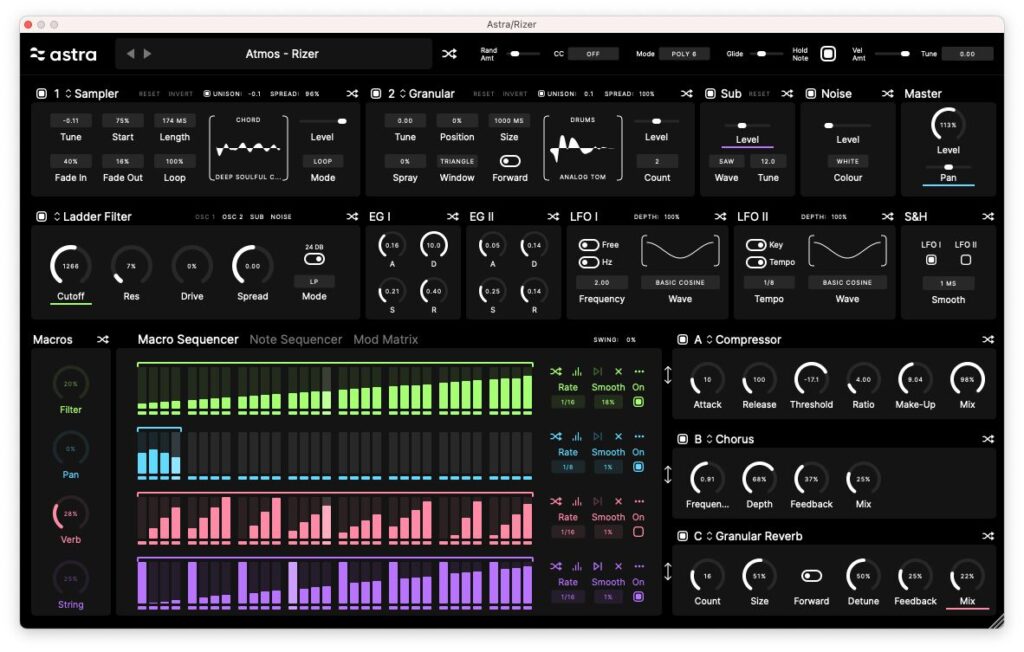
In the realm of electronic music production, the allure of the 80’s synth leads remains undiminished. These leads, renowned for their rich, resonant textures, form a cornerstone in the legacy of synth-based music. For the advanced producer, recreating these sounds isn’t just about nostalgia; it’s an exploration of sonic character and complexity. Serum, a synthesis powerhouse, offers a plethora of features for crafting these iconic sounds. This guide delves into the nuanced use of Serum to not just emulate but also reinvent the classic 80’s synth lead.
The Essence of 80’s Synth Leads
To authentically reproduce 80’s synth leads in Serum, one must first grasp their fundamental characteristics. These leads typically exhibit a full-bodied analog warmth, achieved through specific waveforms and modulation techniques.
In Serum, the challenge lies in harnessing its digital precision to replicate the imperfect, character-rich tones of vintage analog synths. This process involves a deep understanding of Serum’s oscillator warp modes and unison detuning, carefully manipulating these to recreate the slight instabilities and rich harmonic content of classic 80’s synths.
Serum’s Oscillators and Waveforms for Vintage Sounds
Advanced sound design in Serum begins at the oscillator level. For 80’s synth leads, the selection and manipulation of waveforms are paramount.
Traditional 80’s synths relied heavily on basic shapes like sawtooth and pulse waves, but the magic lay in their analog imperfections. In Serum, this involves expertly modulating these waveforms using the Warp function.
Techniques like Bend+, Bend-, and Asymmetrical warping can introduce subtle nonlinearities, emulating the quirks of vintage oscillators.
Additionally, understanding Serum’s WT POS (Wavetable Position) parameter allows for dynamic movement through complex wavetables, bringing a modern twist to the classic 80’s sound palette.
Crafting the Perfect Envelope and Filter Settings
In Serum, the envelope and filter settings are critical in shaping the dynamics and tone of an 80’s synth lead. The ADSR envelope must be tailored to capture the quick attack and moderate decay/release characteristic of the era’s leads.
But the intricacy lies in fine-tuning the envelope parameters to control the texture and response of the sound. Serum’s filter section is equally pivotal. By engaging the right filter type (like the MG Low 18 for its warm, analog-like roll-off), you can sculpt the harmonics and resonance that define an 80’s lead.
Experimenting with the Drive and Fat parameters within the filter can add the necessary warmth and body reminiscent of vintage synths.
Modulation Magic – LFOs and Matrix Routing
LFOs in Serum are indispensable for infusing life into 80’s synth leads. The trick is to use LFOs not just for vibrato or tremolo effects, but to dynamically modulate various parameters like the wavetable position, filter cutoff, or even warp modes.
This creates a lead sound that evolves over time, a staple in the 80’s synth playbook. Serum’s modulation matrix opens up a realm of possibilities here. By assigning LFOs to modulate oscillator pitch or filter resonance, with precise control over the modulation depth and rate, you can craft leads that pulse and breathe with the rhythmic and melodic complexity that defined 80’s music.
The Role of Effects in Recreating 80’s Leads
Serum’s effects section is your final frontier in crafting authentic 80’s synth leads. The strategic use of chorus, reverb, and delay can transform a simple waveform into a lush, space-filling lead.
- The Hyper/Dimension effect, for instance, provides the stereo width and depth that were hallmarks of 80’s synth soundscapes.
- Delving into the specifics, a moderate rate and depth in the Chorus effect can emulate the classic ensemble effect of vintage hardware.
- For reverb and delay, the key lies in tuning the size, decay, and mix parameters to balance the lead’s presence in the mix without overwhelming it.
These effects, when used judiciously, bridge the gap between the pristine quality of Serum and the analog warmth of classic 80’s synths.
Advanced Techniques – FM and Sync for Unique Textures
Serum’s capabilities in Frequency Modulation (FM) and Oscillator Sync allow for the creation of textures that go beyond the traditional scope of 80’s leads. FM, in particular, offers a wealth of sonic possibilities. By modulating the pitch of one oscillator with another, you can produce harmonically rich and complex tones.
For an 80’s flavor, try using a simple waveform like a sine wave as the modulator, at a lower octave, to introduce subtle yet intricate overtones. Oscillator Sync, on the other hand, is a technique where the periodicity of one oscillator is locked to another.
This can be used to create sharp, metallic tones or evolving timbral changes, characteristic of some of the more experimental 80’s synth sounds.
In Serum, the precise control over these parameters allows for detailed sculpting of the lead’s timbre, making it possible to recreate and innovate upon the distinctive textures of the era.
Conclusion
Mastering the art of creating 80’s synth leads in Serum is a journey of exploration and creativity. From the basic waveforms and modulation techniques to the advanced use of FM synthesis and Oscillator Sync, Serum provides a comprehensive toolkit for recreating these iconic sounds.
As an advanced producer, the key is not just to replicate but to innovate, using the vast array of tools at your disposal to add a contemporary twist to these classic sounds. Remember, while technical knowledge is crucial, experimentation and personal flair are what will make your synth leads stand out.
So, dive into Serum, experiment with these techniques, and infuse your tracks with the timeless charm of 80’s synth leads.





